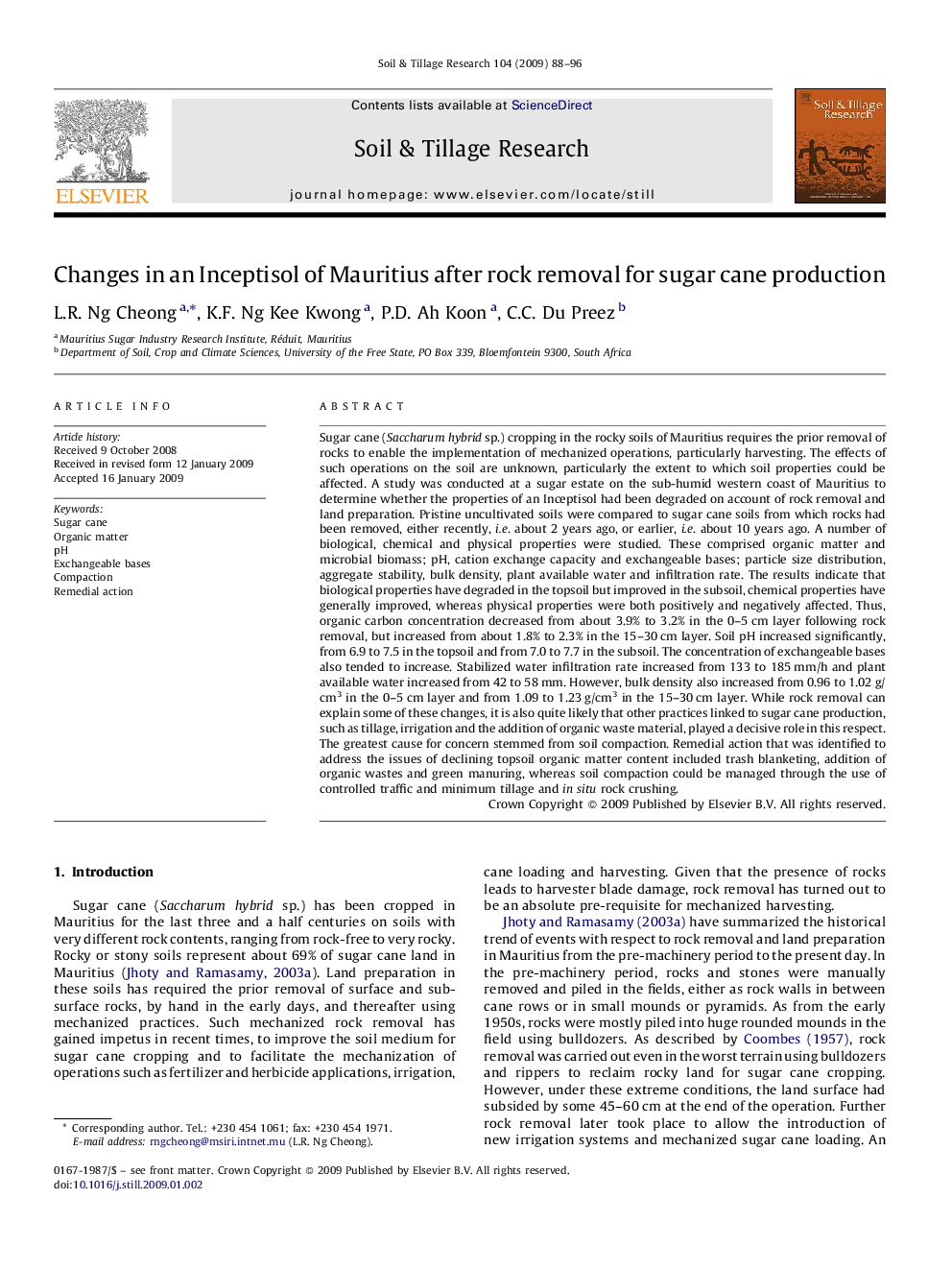| Article ID | Journal | Published Year | Pages | File Type |
|---|---|---|---|---|
| 306395 | Soil and Tillage Research | 2009 | 9 Pages |
Sugar cane (Saccharum hybrid sp.) cropping in the rocky soils of Mauritius requires the prior removal of rocks to enable the implementation of mechanized operations, particularly harvesting. The effects of such operations on the soil are unknown, particularly the extent to which soil properties could be affected. A study was conducted at a sugar estate on the sub-humid western coast of Mauritius to determine whether the properties of an Inceptisol had been degraded on account of rock removal and land preparation. Pristine uncultivated soils were compared to sugar cane soils from which rocks had been removed, either recently, i.e. about 2 years ago, or earlier, i.e. about 10 years ago. A number of biological, chemical and physical properties were studied. These comprised organic matter and microbial biomass; pH, cation exchange capacity and exchangeable bases; particle size distribution, aggregate stability, bulk density, plant available water and infiltration rate. The results indicate that biological properties have degraded in the topsoil but improved in the subsoil, chemical properties have generally improved, whereas physical properties were both positively and negatively affected. Thus, organic carbon concentration decreased from about 3.9% to 3.2% in the 0–5 cm layer following rock removal, but increased from about 1.8% to 2.3% in the 15–30 cm layer. Soil pH increased significantly, from 6.9 to 7.5 in the topsoil and from 7.0 to 7.7 in the subsoil. The concentration of exchangeable bases also tended to increase. Stabilized water infiltration rate increased from 133 to 185 mm/h and plant available water increased from 42 to 58 mm. However, bulk density also increased from 0.96 to 1.02 g/cm3 in the 0–5 cm layer and from 1.09 to 1.23 g/cm3 in the 15–30 cm layer. While rock removal can explain some of these changes, it is also quite likely that other practices linked to sugar cane production, such as tillage, irrigation and the addition of organic waste material, played a decisive role in this respect. The greatest cause for concern stemmed from soil compaction. Remedial action that was identified to address the issues of declining topsoil organic matter content included trash blanketing, addition of organic wastes and green manuring, whereas soil compaction could be managed through the use of controlled traffic and minimum tillage and in situ rock crushing.
